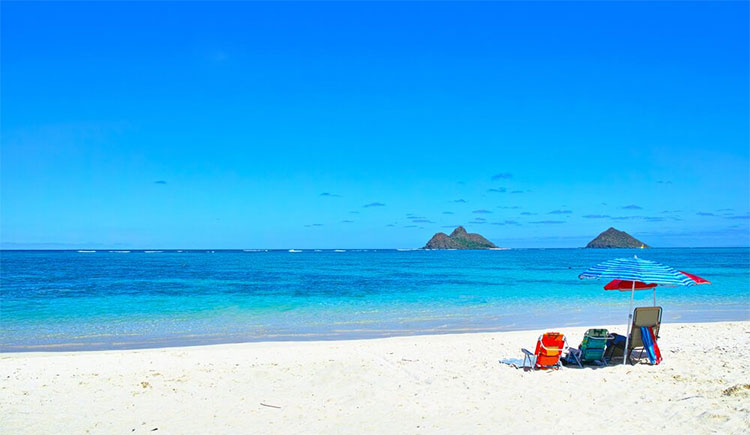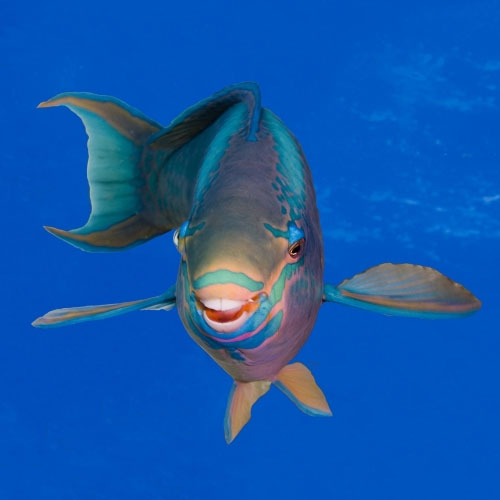Beautiful white sand beach in Hawaii is really just ... fish feces?
Hot summer, who doesn't want to go to paradise resorts with long white sand beaches? However, the truth is that white sand is not as clean as we thought they were just fish droppings.
The tropical waters have long been famous for their beautiful landscapes with bright white sand beaches and fresh, cool sea water, coconut trees tilted with cool summer breezes and cool breezes. There is no doubt that such places are known as the ideal resting paradise.
However, contrary to the bright appearance of white sand on tropical beaches, they are really dirty and mostly made from fish waste . What does this mean? That is, when we run around on these sandy beaches, we are stepping on fish feces.

Unlike what we imagine, the white sand in the most beautiful beaches in the world is actually the grouper's.
The large, colorful grouper lives in the nearshore reefs in tropical waters and rocky beaches around the world. These fish have strong teeth, they love to eat algae.
Harmful algae are a major problem for coral growth. Algae appear dense so that the coral does not receive sunlight, which leads to a strong outbreak of pathogenic microorganisms on corals. Grouper eliminates these obstacles by choosing algae as the main food source.
These fish eat algae very quickly, like earth excavators. In a minute, it bites 20 times and swallows a large number of algae around the corals or other pests. Then it digests and discharges to the outside environment.
The digestive system of grouper works very effectively, all food is crushed and discharged is pure and beautiful carbonate sand . Marine biologist Ling Ong is working at SWCA Research Laboratory for Marine Environment, saying that Hawaiian grouper can produce 362kg of sand each year.

Grouper with strong teeth, chew algae and emit pure carbonate sand.(Photo: burnsboxco / iStock).
'In places like Hawaii or islands in the middle of the sea, we have very little sand from the mainland. The sand here is mostly derived from biology or animals in nature. So, if you're walking on the shores of Hawaii, that means you're stepping on the grouper's grouper, the sea urchin or some species of the deep sea , "Ong said.
However, not every sand in the world is formed from the waste of living creatures. Much of the sand is formed when the stone is broken due to weathering and erosion that lasts thousands of years or even millions of years. Depending on the type of stone, they have different break times.
Before reaching the coast, rocked slowly down the rivers or streams and was constantly broken down along the way. Sand from broken rock on the land poured into the ocean very much and long, forming sandy beaches along the coast. Particularly in tropical islands, this process is unlikely and so please thank the grouper for creating these beautiful tropical beaches.
- Strange beauty of 'unique' beaches
- Pictures of picturesque 'shipwreck' beach
- The beach disappeared for 12 years suddenly appeared in just one night
- Devil's Island - Kauai Island
- Sandstorm swept away flying objects on the French beach
- Where does sand in the sea come from?
- Sand dunes appear dense at Nha Trang beach
- Animals 'blooming' in the deep sea
- Unbelievable but true story: the world is falling into a sand crisis
- The most beautiful aquarium fish
- Fish build sand castle to attract mates
- A dreamlike secret beach
 Surprised: Fish that live in the dark ocean still see colors
Surprised: Fish that live in the dark ocean still see colors Japan suddenly caught the creature that caused the earthquake in the legend
Japan suddenly caught the creature that caused the earthquake in the legend A series of gray whale carcasses washed ashore on California's coast
A series of gray whale carcasses washed ashore on California's coast Compare the size of shark species in the world
Compare the size of shark species in the world